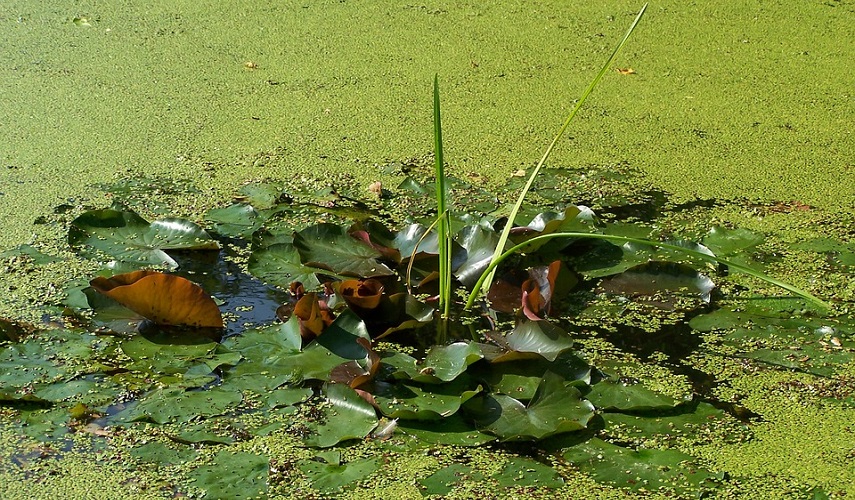Apart from pond algae, other plants make their way into the pond ecosystem, which is not ultimately helpful. Other than competing for nutrients and sun with various plants in the pond, they also tend to overpopulate and crowd out the rest of the living organisms. When they become uncontrollable, it can also be a headache since you have to employ extraordinary means to get rid of duckweed. Some of these plants serve as food for some species of fish, but in excessive amounts, they become a nuisance and can cause more significant problems for pond owners if left unchecked and untreated. Preventing them from ever entering the picture or gaining control over their growth is then a huge must if you’re a pond owner. One of these plants is the duckweed. To know how to get rid of duckweed and its overgrowth in our ponds, it pays to understand what it is and where it comes from.
Duckweed – Information
What is duckweed?
The duckweed, or water lens, as it is commonly known, belongs to the Lemna minor family and is a prolific aquatic plant that is one of the causes of death of fish and symbiotic algae in ponds by depleting it of oxygen and other nutrients.
The plant inhabits quiet and stagnant ponds in areas where people, animals, and other natural elements do not disturb pond life. These lakes are typically nutrient-rich since leaves, twigs, branches, and other debris fall and sink to the bottom and create a stratified sludge that oozes and smells of duckweed food.
Mature ponds that have not been cleaned in a while or have not seen better days are likely candidates for duckweed infestation since they can grow freely and conquer the entire pond without hindrance. High levels of nutrients due to countless runoff from septic tanks, lawn fertilizers, animals, and agriculture and land animals and birds attract duckweed in these ponds, especially those not visited by much wind or any type of water movement.
Worse, duckweed colonies also bring with them another plant weed called the watermeal that are so small you can barely see them, but they are present wherever duckweed are. Watermeal rarely appear in isolation but will always embed in duckweed growth.
It is crucial to prevent duckweed from ever occurring in your pond, but should they appear, gaining control over them must be done as early as possible, especially before the onset of the Spring season. There must be a sense of urgency when dealing with duckweed since eradicating them from your pond may take several years. When you get rid of duckweed, they tend to come back with a vengeance, more of them, and growing even faster!
Duckweed may bring benefits at manageable levels by providing snacks for some fish like koi and goldfish and filtration as they use up nutrients in the pond. But when they reproduce, they can seriously bring down the water’s oxygen levels and add to the build-up of harmful substances, debris, waste, and sludge in the lake.
A duckweed bloom is also a telltale sign of a deeper problem in a pond, usually concerning water quality, and you need to spend time investigating what the issue could be.
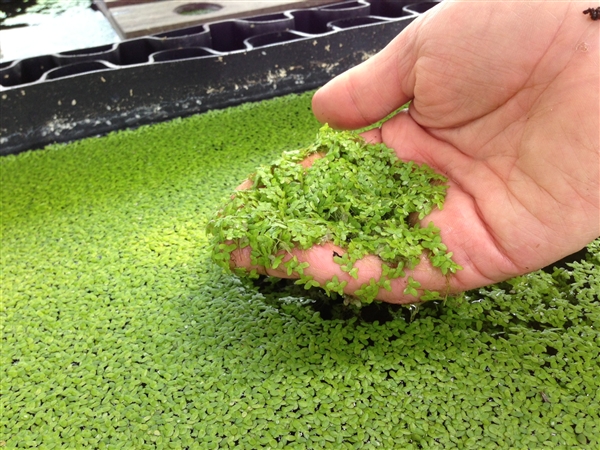
What brings duckweed to a pond?
Animals
Duckweed seeds may be brought to a pond by land animals or birds, unintentionally, when they go to a particular body of water. You don’t see these seeds because they are quite small, and only when they sprout, do they become visible. When the pond conditions support their growth, they quickly spread all over the lagoon. Ideally, you must know how to get rid of duckweed when they have just sprouted so that they have no chance to reproduce.
Aquatic plants
At times, when you buy aquatic plants to put in your pond, the duckweed is stuck in them within their substrate or foliage. Some pond owners who have previous knowledge about duckweed know better to isolate their plants first before introducing them into the main pond or until they have cleaned them off, but some say that it’s better just to catch the sprouts when they appear.
Duckweed Versus Blanket Weed
Duckweed has always been compared to algae as both overtake the plant life in ponds, but in truth, the former is a plant while the latter is a microorganism that can photosynthesize. The algae that duckweed is mostly mistaken for is the blanket weed. Both are similarly present in ponds, but the blanket weed is more prevalent in the summer when other common algae bloom. It grows alongside the green algae, or also known as pea soup algae.
Blanket weed is a stringy alga, almost hair-like and mostly floats on pond water, clumped together in certain areas. When in bloom, they can cover the entire surface of the lagoon; that’s why people started calling them “blanket” weed since they shroud a pond with their overgrowth completely.
These algae may be removed with the same methods used to eradicate pond algae – through algae treatments. The blanket weed is even more challenging to get rid of than duckweed, especially when the conditions are right and pond nutrients are sufficient to support its continued growth. The duckweed presence may even help remove the blanket weed since they compete for the same nutrients and sun. At times, pond owners leave some duckweed in their marsh to eliminate the blanket weed, especially during the hot months when there are too many of the algae.
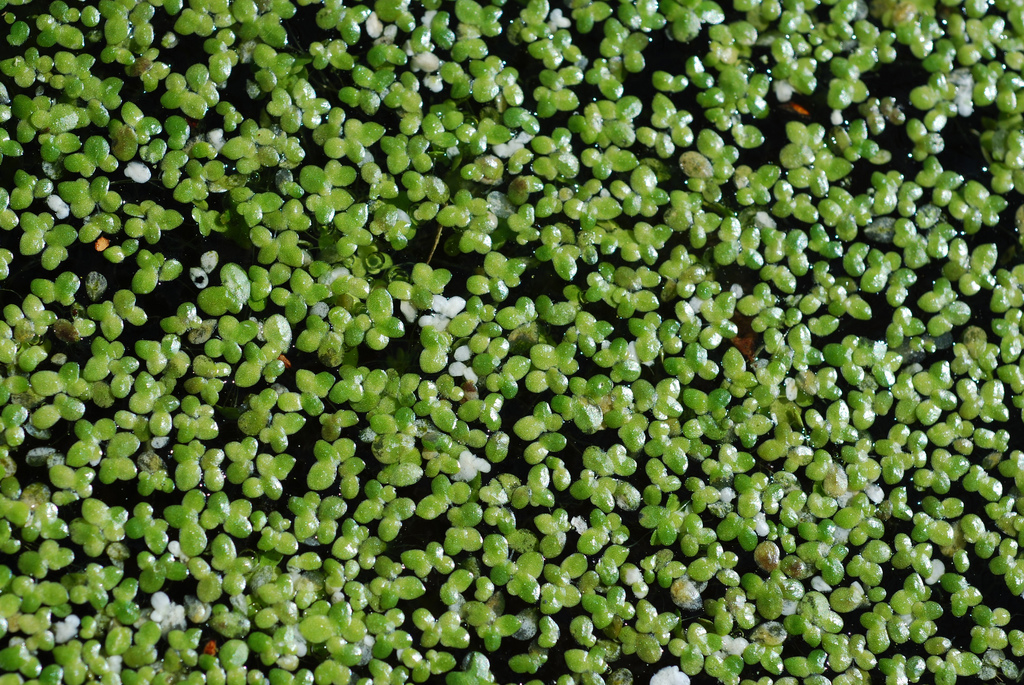
Why do I need to learn how to get rid of duckweed?
As mentioned above, a healthy amount of duckweed may be encouraged in a pond as they serve various purposes for the pool ecology. Besides being a snack for the fish that live in it, they also provide protection or hiding spots for some preyed upon fish when their predators come hunting for them. In the previous section, we have learned how it can help eliminate blanket weed overgrowth and other algae. Since the duckweed is a plant, it can also reduce the nutrient level in the water being one of those who benefit from it and add to the pond’s oxygen sources.
Overgrowth
The most significant problem with duckweed is how prolific it is and how uncontrollable it can become when it starts growing. If your pond has less than perfect water quality and has excessive nutrients, it’s the most conducive condition for duckweed to spread at exponential speed over your entire lake. It’s as if you just slept on it, and the next day, they have overtaken your pond!
Water conditions
Some people do nothing about their duckweed plants and accept them as part of the natural ecosystem of their pond. However, because of how quickly they can grow, there comes the point when they cause issues in the quality of the water.
Harmful to Fish
In ponds with fish population, too many duckweeds can bring down the oxygen levels and spike up the ammonia present in the water, which is very harmful to the pond animals.
The vicious cycle repeats as new duckweed grows, and some die and sink to the pond floor where they decompose and use up the oxygen. When too much duckweed decays and other matter are being broken down, nitrite and ammonia levels shoot up. Tremendous amounts of oxygen will be used up continuously until all decaying matter is entirely decomposed.
Harmful to Plants
When fish are absent in your pond, then you have fewer problems to deal with in your hands when it comes to the presence of duckweed. Some pond owners even prefer to keep them, exerting no effort to get rid of duckweed since they cause no significant problems with pond maintenance. However, most water ponds have other plants in them apart from the duckweed. For instance, you may have water lilies that need a lot of nutrients to grow.
If duckweed uses up most of the nutrients in the pond because of how prolific they are, they may not leave enough for the water lilies or any other plant present in your pond.
As apparent in the discussion above, duckweed is not bad at moderate levels and offers benefits to both animals and plants in the pond. However, the reality is that they can reproduce at lightning speed, and when they do reach excessive levels, it is when they cause harm to the pond environment. So, despite the minimal advantages derived from them in earlier stages, it’s up to the pond owner to evaluate when the right time is to cut them off and not allow them to take over.
How to get rid of duckweed through herbicides
Using herbicides or chemical formulations to eliminate duckweed is the quickest way since they work to induce the cellular breakdown of the plants. However, they are not recommended for ponds with a thriving fish population since the ingredients to the herbicides are highly toxic to fish and other living organisms. When you use them in your pond, the herbicides will directly target the duckweed but may kill all plants, even ones in the pool periphery and on the surface such as water lilies.
You may consider using herbicides only when everything else fails and when the duckweed overgrowth has gone wayward and out of control. Methods that you can employ without the use of harmful chemicals must be tried first rather than herbicides, especially when you have fish in your pond since the risk of death is very high.
You may try the Aquatic Herbicide by Tsunami DQ as a last resort method to eliminate duckweed in your pond only if you have exhausted all efforts, and nothing works to remove duckweed effectively. Keep in mind that state regulations govern these weed killers’ utilization because of the harm they pose to the environment. Herbicides, nevertheless, fall into the category of those which are less damaging.
Carefully read instructions on the labels of the herbicides that you purchase so you can be guided on how to use them to kill duckweed and everything else in controlled quantities. There is no trial and error in these chemicals, and your mistake will prove fatal to your pond organisms.
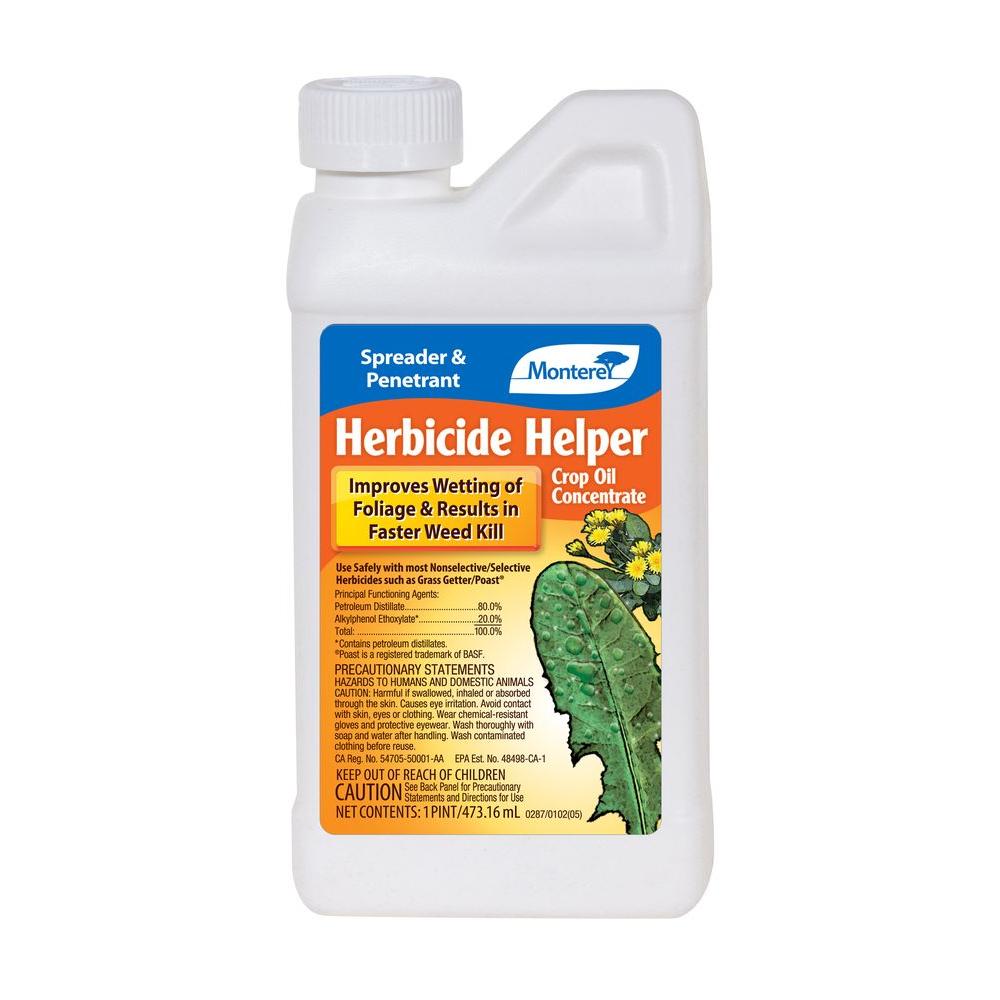
Three Kinds of Herbicides
There are variants to the herbicides that you can choose from should you decide to go this route.
Selective Herbicide
This type is so much better since it’s formulated to target the duckweed plant and others. It may be mixed with water for a bit of dilution. It is a far cry from the blanket herbicides that will seek to kill and destroy all plant matter in your pond.
Contact Herbicide
You will need to apply this herbicide directly onto the area where there is duckweed infestation to maximize the effect. It will not linger after it does its job so that it won’t deal with further duckweed growth. Because of this, you have to use it multiple times before you can completely eradicate duckweed.
Whole Pond Herbicide
This herbicide will work to kill duckweed and other kinds for an entire season. You only need to use it once and wait for it to take effect.
Using Herbicides
Though herbicides cause the cellular breakdown of the duckweed, you will still have to remove the dead duckweed in your pond. The smart way to do it is to apply the herbicides in sections, work your way throughout your pond, treat and clean up as you go.
The herbicides work fast, and you will observe that the duckweed turns into a brown color when they die so you can identify the ones that you can readily scoop out of the water. You can use a basic net or rake to accomplish this. Repeat this for every area of your pond until you have covered the whole lagoon.
You can choose to do the process again for the entire pond just to make sure that you have eliminated all remaining duckweed. However, you have to read the instructions on the particular herbicide that you bought because some will require you to wait before you apply the second run of treatment. This step is crucial since it typically takes several cycles before your job is done.
The removal of the dead duckweed is also crucial for two reasons. First, it opens up the pond surface so you can check if there are more duckweed underneath. Secondly, you also avoid the inevitable – decaying matter sinking to the bottom of your pond, which will decompose, produce more nutrients, and support further duckweed growth, which will be counterproductive for your pond.
How to get rid of duckweed naturally
The most eco-friendly and effective way to deal with duckweed is via natural methods. Knowing the risks involved in using chemical herbicides makes it challenging to pay the price despite the swift eradication of the duckweed in your pond.
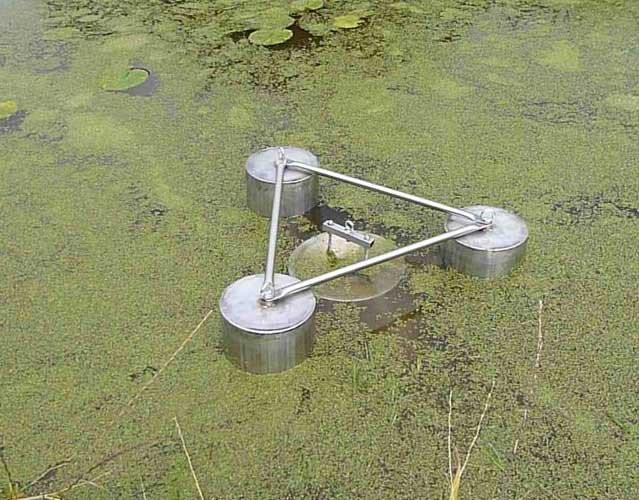
Manual Removal
It’s straightforward to get rid of duckweed manually from your pond since they float on the surface. As compared to algae that can hide in various areas of the lake. This fact will allow you to take control of your cleaning since you can even leave some duckweed to take advantage of the benefits earlier discussed.
Net
If duckweed has grown moderately in your pond, you can keep them to serve the beneficial purposes mentioned earlier. But there is always the danger of overgrowth, so constant monitoring and manual removal will be necessary. A quality net will be sufficient for this task.
Drag rope
For larger ponds, you can employ a large net or drag rope, pulled by boats if the lake is rather massive. You can situate the lines and net along the shorelines and close the loop by reining them in. This job becomes easier when you have the wind in your aid. Therefore, try and schedule your task on a windy day.
Skimmers
If you have a mechanical skimmer budget, it can also help you do the job faster. The system will discharge surface pond water with the duckweed, allow it through a filter. This will separate the duckweed from the water. And then it goes back to the pond, leaving the duckweed. For smaller lakes, there are also affordable skimmers as well as floating skimmers that you can use.
A new product introduced in the market today is the parachute skimmer. You throw it into the water and drag by a rope. You, then, gather the duckweed from its mesh. It’s suitable for small and medium lagoons.
Beneficial Bacteria
There are natural treatments made today that contain a mixture of good bacteria which you can use on your pond. The action is to starve the duckweed and algae of nutrients such that they eventually die. You will need to remove the dead duckweed and other plants manually. However, introducing this treatment to your pond will improve water quality and provide natural filtration. Making it less likely for duckweed to return in the future.
Applying this treatment is ideal after a significant cleanout of duckweed. Though it will work effectively to prevent any further growth. You still need to regularly monitor your pond. Especially if you’re still working on water quality and nutrient levels. The duckweed quickly grows and spreads, so it’s vital to check continually.
Reduce Feeding of Fish
As mentioned earlier, fish love to eat duckweed. But if they are too full, they will refuse the duckweed. It goes without saying that to encourage them to eat more and more of the duckweed. You need to reduce how much you feed them. Most ponds with a considerable fish population will not have a problem with duckweed infestation. Since the fish can eat the duckweed faster than it grows. Fish can help reduce the overgrowth if there’s too much or deal with the leftovers after a huge cleanup.
Remove Extra Nutrients
To evaluate if you have excess nutrients in your pond. You can do testing to check the level of phosphates and nitrates. If they’re high, you can begin cleaning methods to remove the debris and sludge at the bottom of your pond. These substances are food for the algae and duckweed. If left unchecked and they pile up, expect your pond weed to grow as well and rapidly.
There are various products in the market today which you can use to deal with excess nutrients in your pond. You can try nitrate and phosphate removers, pond skimmers, pond vacuums, and pond netting. In order to remove debris, muck, and other harmful substances from your pool.
Natural Predators
You can also add natural predators to your pond or in the general area where your lagoon is. In order to deal with duckweed infestation. Numerous fish species love to eat duckweed.
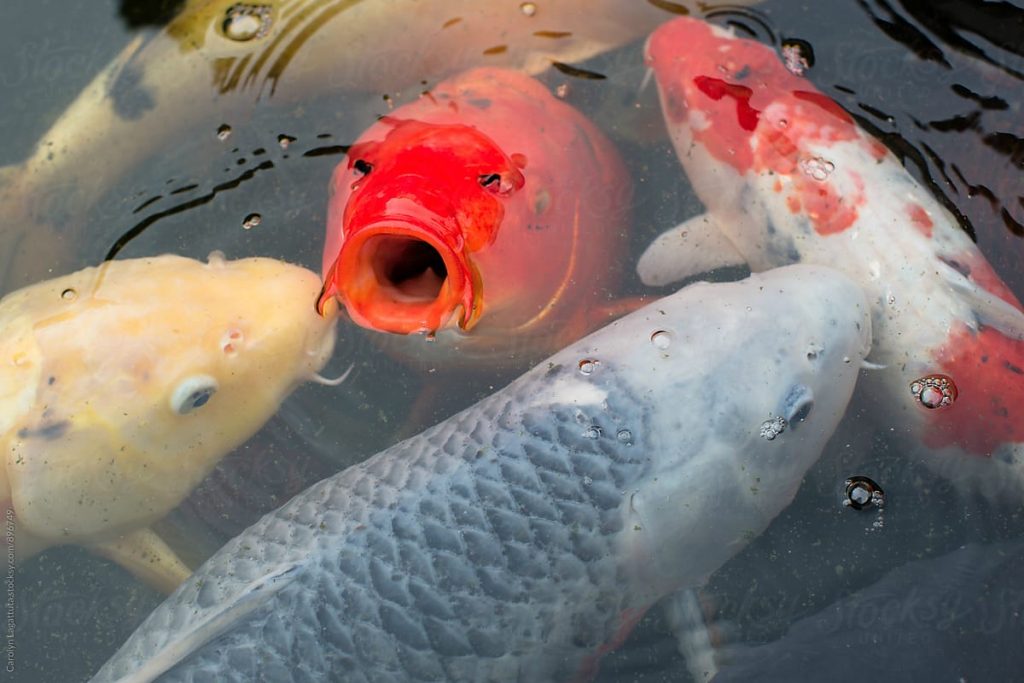
Koi
Pond owners typically put koi fish in their lagoon for aesthetic reasons. But they can also be an excellent choice of fish in your pond. Moreover, if you want to get rid of duckweed. If you notice that your koi are not munching on them even as they are available and in plain sight. It may be because they are still full of your last feeding. Try and reduce the amount of food you give to them to get them to eat duckweed.
Goldfish
Goldfish will also eat duckweed and watermeal as their go-to food. As long as you have a healthy goldfish population in your pond. You can rest assured that your duckweed will be continually eaten.
Tilapia
The Tilapia fish, particularly the red belly species, will also love to eat duckweed. For an acre of pond space, 30 lbs of this type of fish will likely thrive.
Grass Carp
This fish is the most popular to pond owners. Especially, the one who want to deal with any type of aquatic weed infestation effectively. Grass carp feeds primarily on these plants and can ingest up to 3x their size every single day. If more than half of your pond is full with weed. Then, put ten 8-12-inch grass carp per acre and you have your work cut out. Bring the number up to 15-20 grass carp if more than 50% of your pond has duckweed overgrowth.
Ducks
Duckweed goes by the such name because they are the duck’s favorite food! Carefully plan taking care of ducks in your property, though. Since they are also the ones who bring duckweed into your pond. Also, they can eat up some fish in the water as well apart from the duckweed. If you think you can handle balancing all these variables in your hands. Domesticated ducks are an excellent natural predator for your duckweed.
How to get rid of duckweed through prevention
As they always say, prevention is better than cure. It’s smarter to employ means to keep the duckweed from ever entering your pond. Or, at the very least, keep their number in check, than to deal with an infestation.
Pond aeration
Because duckweed prefers calm and stagnant waters, installing an excellent aeration system into your pond will discourage growth. It may very well work effectively in ultimately creating an environment where duckweed will not be present. Or at least bring their presence to a minimum.
Drive birds away
Though it will be difficult, you can try to utilize means to drive away birds from your pond. Since they are the carriers of duckweed seeds. You can probably consider providing netting or fencing around your lagoon to achieve this.
Be extra careful with fertilizers
Ponds are usually located in a garden or area where you are also taking care of other plants. Be extra careful when you apply fertilizers, especially ones that you spray onto the plants. Since some may spill over to your pond and add excess nutrients. If you haven’t yet employed means to deal with extra nutrients in your pond, such as taking care of sludge at the bottom or manually removing floating debris. It won’t help to add nutrients to it through fertilizer runoffs.
Check your septic tank
Most properties have a septic tank underneath as required by city regulations. And because it’s a basic necessity in every home. Conduct regular checkups to ensure that it is in excellent condition. Any type of leak will introduce nutrients to the surrounding area, which may likely spread over to your pond.
Do regular pond cleaning to get rid of duckweed
You need to keep your pond’s water quality at healthy levels through regular cleaning. You may have to check every so often if there is a build-up of floating debris on your pond surface. Moreover, you can readily and manually remove with a net.
This step will keep them from sinking to the pond’s floor. In turn, form a nutrient-rich sludge that your duckweed can feed upon. Any decaying matter on your pond bottom releases substances onto the water. The duckweed can use that to grow and spread rapidly. You can avoid this by using a pond vacuum to filter the majority of the sludge.
Final Words
There are countless ways on how to get rid of duckweed in your pond. However, the best ideas are those that use natural means. If you devote sufficient time in regularly checking and monitoring your pond. You will never have to deal with duckweed infestation. Or at the very least, you can keep them at manageable and beneficial levels for your pond.
